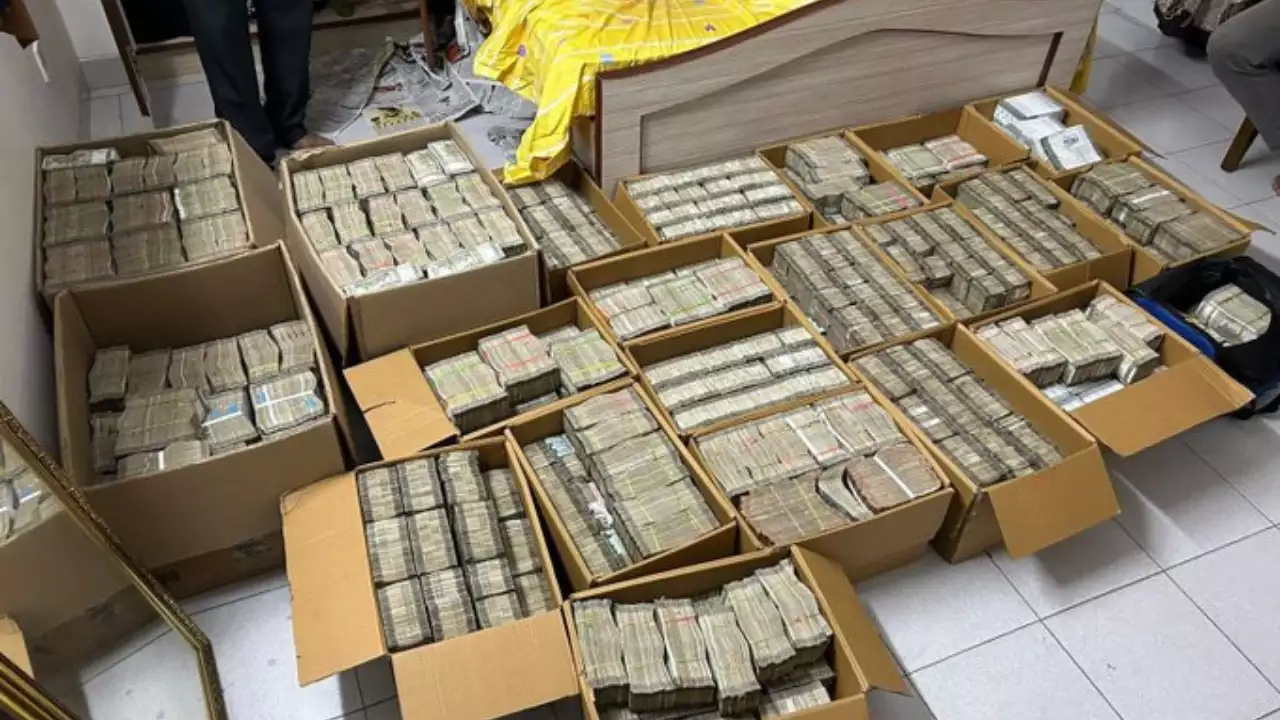It’s Mayawati versus Modi in U.P.
In a January 2015 opinion piece titled ‘When the elephant disappears’, Sanjay Kumar and Pranav Gupta argued that the Mayawati-led Bahujan Samaj Party (BSP) was hurtling downhill to the benefit of Narendra Modi’s Bharatiya Janata Party (BJP). The authors said that in the 2014 Lok Sabha election, the BSP had lost votes across castes but the final blow was the migration of a sizeable section of the party’s core voters, Dalits, to the BJP. In conclusion they asked: “Circa 2015, we could ask, what is happening to the BSP and where is Mayawati in mainstream politics?”
Though late by 19 months, the answer to the whereabouts of Ms. Mayawati might have finally come. Newly resurgent and riding the tailwinds of a Dalit uprising located primarily in Gujarat but rapidly resonating with Dalit masses around the country, the BSP chief is currently in home ground U.P., rolling up her sleeves for an all-knives-out showdown in the upcoming Assembly election. Her party, which until recently shunned publicity, preferring to work silently on the ground, has upped its public profile and burst on the social media landscape, tweeting short, crisp messages and forming mutually reinforcing links across Dalit social media groups.
A reverse Ram Mandir moment
Ms. Mayawati herself has been something of a spitfire, a form not seen since her 2014 rout. Her aggression in Parliament over the Dayashankar Singh incident (the BJP functionary had likened her to a prostitute) was apparently only the beginning: her cadre invaded the streets swearing vengeance and justice, recalling the early war-like years of the BSP. At that precise point surfaced a gut-wracking video that captured in graphic detail a violent upper caste attack on Dalit cow skinners in Una in Gujarat. Against a backdrop of daily atrocities on them, Dalits’ retaliation to the Una horror was on a scale beyond anybody’s imagination. The revolt shattered the unstated assumption that Dalits were too habituated to their subjugation and placement in the Hindu caste order to want out of it. Just where Una will eventually take Dalits is still to be seen but from today’s perspective it has all the appearance of an inflection point, somewhat like a reverse Ram mandir moment.
The frenzy that united the upper and lower castes in favour of the BJP made Ayodhya a turning point in India’s political history. It was a Dalit who laid the first stone at the 1989 shilanyas (foundation) ceremony for the intended Ram temple, signalling the start of the BJP’s social engineering project. The Dalit co-option was a message to the world outside, especially to potential allies, that the BJP was a serious political player with a caste outreach extending beyond its often ridiculed Brahmin-Bania base. It would be many years before the BJP’s future partners accepted the party but when they eventually did, the spin-off was fantastic: the BJP pole-vaulted from the margins to the thick of power politics, and subsequently to government formation at the Centre.
Yet thanks to the Hindu orientation of the BJP, which made entrenched caste hierarchies almost impossible to break, the party’s social co-option experiment has succeeded only on and off. Seen once as the definitive symbols of the BJP’s inclusive politics, backward caste leaders such as Kalyan Singh and Uma Bharti invariably found themselves getting the short shrift in a party patently torn between its upper caste heart and backward caste mind. More often than not, it was the heart that won.
Narendra Modi’s arrival in 2014 appeared to have once and for all ended this internal social tension. On the campaign trail in U.P., Mr. Modi flaunted his OBC antecedents even as he spoke the idiom of modernity and development. Surprisingly, the paradox worked to his advantage: marginalised backward and Dalit castes saw their own advancement in Mr. Modi’s rise from caste and class disadvantage to presumptive Prime Minister. As A.K. Verma noted in a September 2014 article inEconomic and Political Weekly (“Development and Governance Trump Caste Identities in Uttar Pradesh”), in U.P., the BJP gained across castes in the 2014 election, but most spectacularly, it broke through the BSP’s Dalit citadel. Mr. Verma said the BJP’s Jatav support was down 16 points to 68 per cent, and in the case of other Dalit castes, down 35 points to 29 per cent. The bulk of this loss, he said, was captured by the BJP.
My own travels in U.P. during the 2014 election suggested that Jatavs, who form around 55 per cent of Dalits in U.P., and who have been Ms. Mayawati’s mainstay, largely stuck with her firstly because the BSP chief is herself Jatav, and secondly because of the sense of security they derived from her leadership. This loyalty and kinship did not apply to other Scheduled Castes who more readily embraced Mr. Modi. But overall, there was no denying that a chunk of Ms. Mayawati’s Dalit vote had shifted to Mr. Modi. As counting ended, the BSP was left with no seat for a pitiful vote share of 19.62 per cent.
The Modi factor
Post the 2014 election, the BSP and the BJP presented stunningly contrasting pictures. Up until 2007, the BSP had dominated the BJP. It aligned thrice with the Hindutva party — in 1995, 1997 and 2002-2003, and each time gained at the expense of its partner. This amazing run climaxed in an awe-inspiring majority for the BSP in the 2007 Assembly election. As the BSP rose, the BJP sank: its tally in the Assembly dropped from 174 seats in 1996 to 88 seats in 2002. In 2007, the BJP crashed to 51 Assembly seats. In the Lok Sabha, the BJP declined from 52 seats in 1996 to 10 seats in 2004. The party finished last among major players in the 2009 Lok Sabha election.
Mr. Modi’s coming comprehensively reversed the scene. If the future Prime Minister turned the BJP’s U.P. deficit into a humongous surplus, winning 71 Lok Sabha seats for a vote share of 42.3 per cent, it was the BSP’s turn to meet a calamitous end.
By any yardstick, the BJP’s 2014 margin should be unbeatable, most so in fragmented U.P., where parties have wrested majorities on a vote share of 30 per cent. And yet, the Una outrage and the revolt it has engendered have infused in Ms. Mayawati a confidence out of proportion to her current electoral standing, and emboldened her to frontally confront and challenge the BJP Goliath.
In the two years since 2014, the BSP had started to rebuild itself, egged on by feedback of a fresh churn on the ground and voter recall of Ms. Mayawati as an administrator with iron control on law and order — a big plus point given U.P.’s current status as a lawless, ever boiling communal cauldron. The BSP had no incumbency burden unlike the ruling Samajwadi Party (SP) while Mr. Modi was perceived to have fallen widely short of the promises he made on the stump.
Around May this year, the Modi-Amit Shah think tank resurfaced with what looked like a foolproof plan to erase the last vestige of Ms. Mayawati’s Dalit support. Unfortunately for the BSP chief, this onslaught coincided with the exit from her party of leaders of repute and standing. Everything was going wrong for the BSP, and it seemed inevitable that the Modi-Shah combine would mount the final assault. Their Dalit outreach plan was elaborate and included minute booth-level management, indoctrination through Buddhist monks and dining at Dalit households. The Prime Minister sounded the election bugle on June 13 with a huge rally in Allahabad, and also on the cards was a Dalit-specific public rally in Agra to be addressed on July 31 by Mr. Shah, the BJP president.
As they say, the best-laid plan can fall apart, and Una hit the BJP like a thunderbolt. Embarrassed, Mr. Shah cancelled the Agra meeting — and to his mortification, Ms. Mayawati addressed a rally at the same place on August 21, drawing an estimated crowd of nearly one lakh. Unsurprisingly, the BSP chief used the opportunity to slash at Mr. Modi. The incumbent SP did get thrown a few punches but it was clear who Ms. Mayawati saw as her rival and who she was getting back at. The BSP chief recalled each one of Mr. Modi’s 2014 promises and accused him of betraying voters, and worse, of not being able to contain the orgy of violence against Dalits and Muslims.
The Dalit-Muslim alignment
The bottom line that emerged from the rally was Dalit-Muslim unity. It has been apparent for a while now that if the BSP has to recover lost ground, it has to go back to the drawing board and do two things: bring the ‘bahujan’ back into the reckoning and form an alliance with Muslims. The BSP has had a troubled history with Muslims primarily because of a perceived incompatibility between Dalits and Muslims. Yet if Una showed anything, it is that they are both victims of a similar oppression. When the BSP chief went to Ahmedabad to commiserate with the Una victims, she pointedly mentioned the gau rakshak attacks on Muslims. The BSP’s Twitter handle now goes with the hashtag, #DalitMuslimUnity.
The BJP’s Dalit plan is in tatters. At this point, any attempt at inter-caste dining and such can only feed into Dalit anger. Years ago, Bhimrao Ambedkar had scoffed at inter-caste dining, saying the fundamental problem was with the Hindu religion. Reprising that sentiment, BSP old-timer, Ambeth Rajan says, “the very notion of inter-dining is demeaning to us.”
The Dalit churn has pumped oxygen into the BSP but it has an enormous vote deficit to overcome. The BJP is down but it is a party with unlimited imagination. For now, though, it is Maya versus Modi in battleground U.P.



